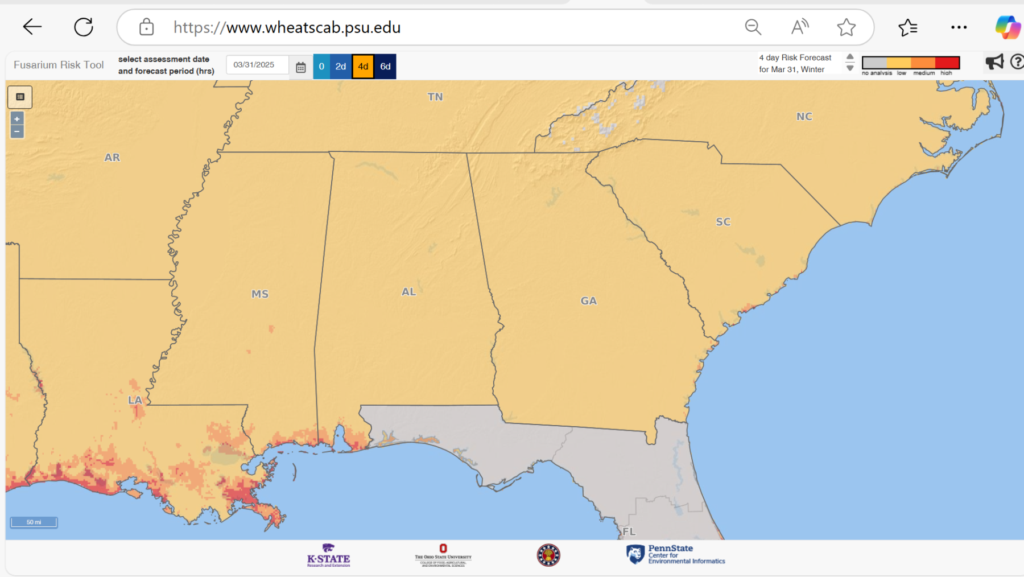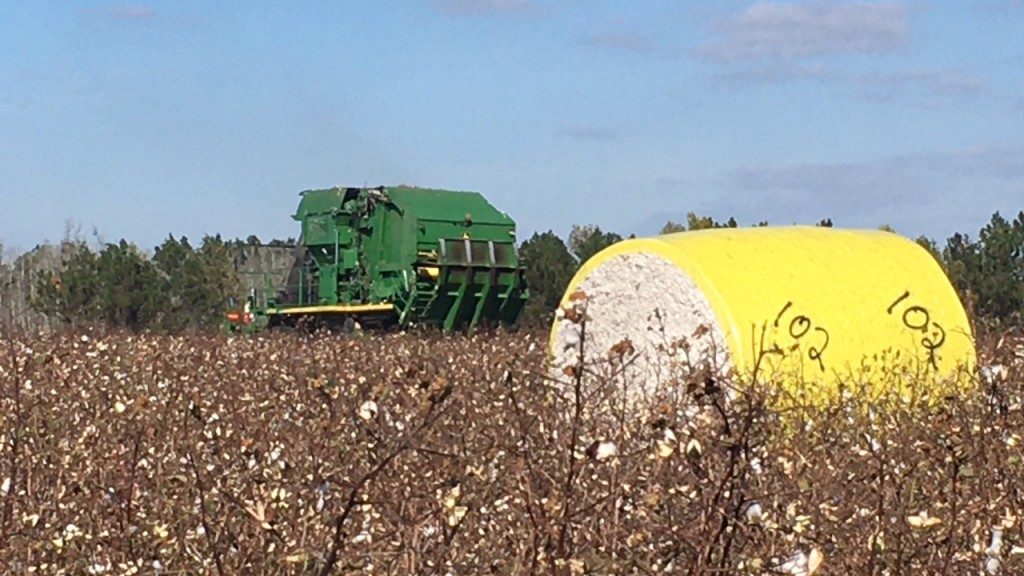As corn planting is in full gear, please remember to plant corn 1.5 to 2 inches deep. Growers need to check their planters to avoid too much down pressure. Please make sure the furrow is closed properly. Sometimes we get in a hurry to finish. Please check your speed to ensure that seed spacing is correct. This will help avoid differences in plant emergence. As corn planting proceeds, please make sure that the coulters and disc openers are aligned correctly, and the planter is level when planting begins.
Small Grain situation: I ran across low levels of strip rust in wheat last week. The wheat was in Feekes stage 8 as the flag leaf begins to appear from the whorl. This stage is particularly significant because the flag leaf makes up approximately 75 percent of the effective leaf area that contributes to grain fill. When the flag leaf appears, at least 3 nodes are visible above the soil surface; occasionally a fourth node can be found. To confirm that the leaf emerging is the flag leaf, split the leaf sheath above the highest node.

What about head blight? Alfredo Martinez-Espinoza, Professor and Extension Specialist, University of Georgia
As of March 31, 2025, the Fusarium Head Blight risk forecast model indicates low risk for the main wheat-producing areas of the state (this can change quickly with storms coming through later this afternoon). In the south and central parts of the state, wheat growth is primarily in the late heading and/or early flowering stages. It is advised to keep monitoring the Fusarium Risk Tool to make an informed decision if a fungicide is needed for FHB management. Several county agents have reported wheat fields with heavy infections of powdery mildew and stripe rust infections.
I looked that the 4 day head blight forecast for Colquitt County. It appears that the risk for head blight is low risk for the next few days. The Head Scab prediction model is available at Fusarium Risk Tool


Hessian fly. Last week we stumbled onto some Hessian fly in a couple of wheat cover crop fields. Dr. David Buntin, UGA Small Grain Entomologist, says that it is Hessian fly pupae (technically puparia) in the picture below. Wheat is the primary host of the Hessian fly, but it also can attack triticale, barley, and rye. The Hessian fly does not attack oats and ryegrass. The Hessian fly is a cool season insect and is dormant over the summer in wheat stubble as a puparium, which is sometimes called a ‘flaxseed’. Adults begin to emerge in early September as soil temperatures decline. Since wheat is not yet planted, the first generation develops in volunteer small grains and little barley. Thus, reduced tillage, lack of crop rotation (wheat after wheat), and lack of volunteer wheat control in summer crops enhance problems with Hessian fly in autumn. Burning wheat stubble alone does not control over summering puparia but will make disk tillage more effective at burying puparia before fall emergence.
If I remember correctly, there were some concerns in 2023 about Hessian fly.
More info on this subject.
Microsoft Word – Buntin Info Hessian Fly.doc

Over the last several days, I have received numerous inquiries about the reduced performance of preplant burndown herbicide applications. Several factors can help contribute to reduced performance of burndown herbicides including application rate (too low?), weed size (too big?), environmental conditions (too cold?), small grain cover crop stage of growth (generally more susceptible prior to boot and after heading), droplet size (too big?), and time (too soon after application?).
For today, let’s just focus on air temperatures. I like to use a cold temperature threshold of <50 F as a benchmark for when herbicides start to not work like they should, If you check out Table 1, there have been many days this month below that temperature threshold. On average, 73% of the days in March at these Georgia locations had low temperatures below 50 F. In my opinion, this may be one of the main factors that has influenced the performance of some burndown herbicides. Good news is that the low temperatures forecasted for next week will be above 60 F so that should help improve burndown efficacy. Although I usually am not a huge fan of using AMS with glyphosate, unless hard water has recently been confirmed with a lab test, I think AMS might help improve glyphosate performance when air temperatures dip below 50 F.

We had a great turnout last Thursday at the Pasture to Plate program. Thank you to all the sponsors and cooks.

If you have any questions please contact your local county Extension agent.
Have a great week,
Jeremy M. Kichler
Colquitt County Extension Coordinator
The University of Georgia Cooperative Extension does not endorse or guarantee the performance any products mentioned in this update.
